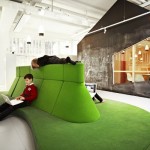In 2008 I attended Design and the Elastic Mind at the Museum of Modern Art in New York. Images and ideas have stayed with me, prompting the question – What does educational experimental design look like at the intersection of innovation, functionality, aesthetics, and deep knowledge of brain research?
Design is the bridge between the abstraction of research and the tangible requirements of practice (Itrusha & Roberts, 2008). It is “the translation of scientific and technological revolutions into approachable objects [and examples] that change people’s lives” (p. 4). Design helps develop the elastic mind that forms and informs innovation. Bergdoll (2008, p. 10) suggests mental elasticity creates the “flexibility and strength to embrace progress and harness it” and is “best suited to confront a changing world of seemingly limitless challenges and possibilities.”
Now, in an increasing time of substantial change, globalization and almost ubiquitous access to the Internet, literature (Wagner, 2012, and others) suggests we need problem solvers, innovators, and inventors who are self-reliant and can think creatively and logically. People with minds elastic enough to survive and thrive with change and uncertainty. Ironically, at the same time, educators, economists, parents and students criticize existing formal education institutions, suggesting traditional venues are not fostering innovative capacity, encouraging student engagement, and/or integrating technology meaningfully into learning. As we come closer to the end of the second decade of the 21st century, the intent of the ILC is to (1) acknowledge the inadequate models of innovative teaching practice and the limited number of creative learning environments where educators, learners, and industry can design, build, incubate and research imaginative technology enhanced teaching and learning, and (2) to provide some examples of what might be.
The purpose of the ILC is to investigate the look, feel and design of an innovative learning environment within a formal educational setting. It will investigate both physical and virtual elements used to disrupt traditional teaching and support interactive, playful, deep learning in a more studio based way, building on Johnson’s notion of the genius of the tinkerer (2010). Specifically, the ILC, through collaboration, research and practice, will seek existing examples of exemplary institutional design; imagine with educational leaders what might be required; partner with industry and academics with an understanding of design to assemble, use and research spaces that by their very design (furnishing, technology, pedagogy, look and feel) invite changed and enhanced practice.
Findings will inform Canadian companies working at the forefront of (1) educational software design and (2) educational furnishing design to imagine and understand the impact physical space and design of learning environments has on learner engagement and the development of creative potential and meaningful learning for learners – both educators and students. Findings will also inform academics, and educators as to the potential of disruptive learning environments to support innovative practices and suggest ways to design learning experiences suggested by Einstein when he said, “I never teach my pupils; I only attempt to provide the conditions in which they can learn.” This research will continue to an understanding of the conditions required to foster and sustain innovations in teaching and learning.
References
Bond, T. (2012). Flipping the classroom with Glogsteredu. iTunes iBooks: California Baptist University & GlogsterEDU.
Johnson, S. (Sept. 25, 2010). The Genius of the Tinkerer. The Wall street Journal – Saturday Essay. Retrieved from http://online.wsj.com/article/SB10001424052748703989304575503730101860838.html
Wagner, T. (2012). Creating Innovators: The Making of Young People Who Will Change The World. New York: Scribner.
Young, J. & McCormick, T. (2012) (Eds). Rebooting the academy: 12 tech innovators who are transforming campus. Washington, DC: The Chronicle of Higher Education.

